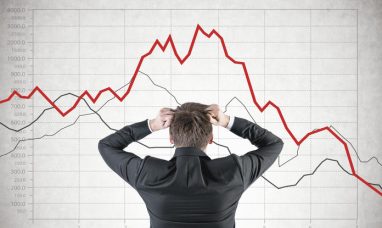Apple Inc. (NASDAQ:AAPL) has been under pressure, with its stock down over 18% from recent highs. The company is approaching bear market territory, and investors are wondering whether this is a buying opportunity or if further downside is ahead for Apple stock.
Several macroeconomic and company-specific factors have weighed on Apple’s performance, from U.S.-China trade tensions to slower-than-expected iPhone 16 adoption. With Wall Street analysts revising their targets and concerns growing over Apple’s delayed AI rollout, the Apple stock forecast remains uncertain.
What’s Driving Apple Stock Lower?
Apple has been facing multiple headwinds in 2025, both at the macro and company levels.
On the macro side, renewed U.S.-China trade tensions have introduced fresh concerns. President Donald Trump’s tariffs on Chinese imports could raise Apple’s production costs, forcing the company to either absorb the impact or pass it on to consumers. Given the current weak consumer spending environment, raising prices could hurt sales, especially as iPhone demand appears to be cooling.
Apple’s business in China is also taking a hit. Chinese consumers are increasingly shifting toward domestic brands, both in smartphones and other tech products. This trend, coupled with regulatory pressures, has contributed to Apple’s weakening position in one of its most critical markets.
On a company-specific level, Apple’s artificial intelligence strategy, branded as “Apple Intelligence,” has faced repeated delays. The highly anticipated Siri upgrade has yet to materialize, and slow AI feature rollouts could further dampen iPhone sales. With analysts lowering their iPhone shipment estimates for 2025, uncertainty remains over whether Apple can maintain its revenue growth.
Analysts Cut Price Targets on AAPL
Wall Street analysts have taken note of Apple’s struggles, with some lowering their price targets. Earlier this week, Morgan Stanley cut its target for Apple stock from $275 to $252, maintaining an “Overweight” rating. The revision comes after Apple faced three analyst downgrades in January, ahead of its fiscal Q1 2025 earnings report.
Currently, of the 36 analysts covering Apple, 17 rate it as a “Strong Buy,” while 10 rate it as a “Hold.” Four analysts have given Apple a “Sell” rating, making it the second-worst-rated stock among the “Magnificent 7,” trailing only Tesla (NASDAQ:TSLA).
Apple’s mean target price sits at $251.51, reflecting a potential 16% upside from its March 12 closing price. However, the wide range between the Street-high target of $325 and the Street-low target of $184 highlights the uncertainty surrounding the Apple stock forecast.
Should Investors Buy Apple Stock Now?
Despite the recent selloff, Apple’s valuation remains relatively high. AAPL currently trades at 30.4 times its expected earnings over the next 12 months, in line with its five-year average but elevated compared to longer-term trends.
One of the key positives for Apple has been the growing contribution of its high-margin Services segment, which helped boost gross margins to a record 46.9% last quarter. However, with hardware sales under pressure and AI feature delays impacting future product adoption, earnings downgrades could still be on the horizon.
For long-term investors, Apple remains a strong brand with a loyal customer base and a robust services ecosystem. However, given the current headwinds, the Apple stock forecast suggests caution. Investors looking for an entry point may want to wait for a more attractive valuation or clearer signs of a recovery in iPhone demand before jumping in.
Featured Image – Depositphotos









